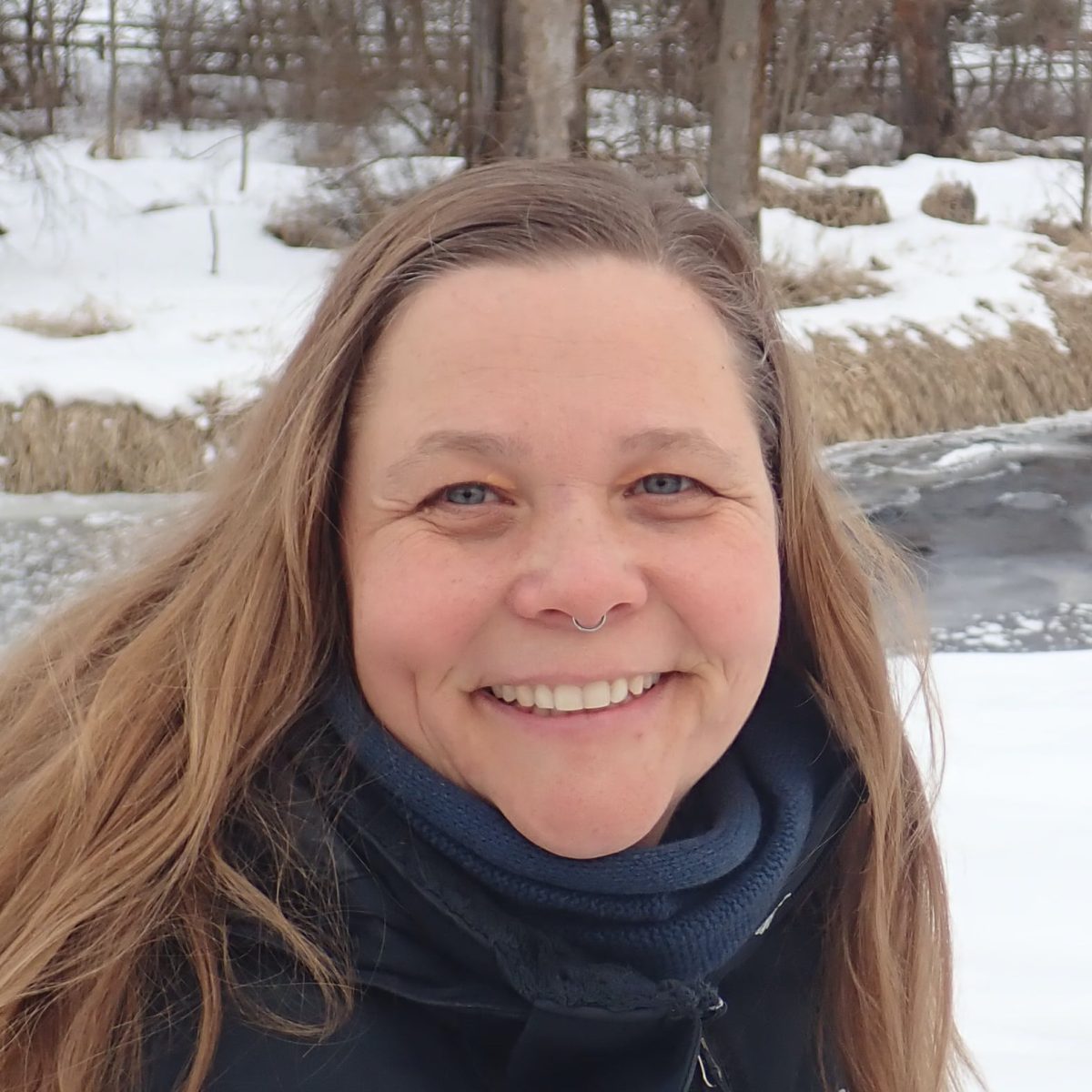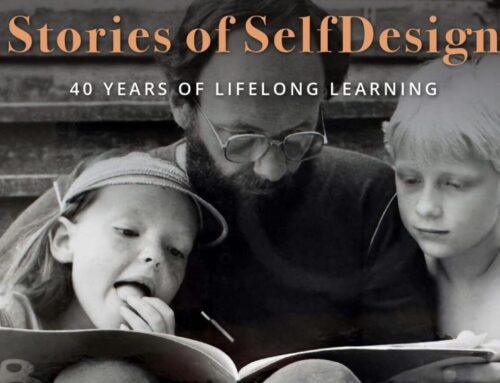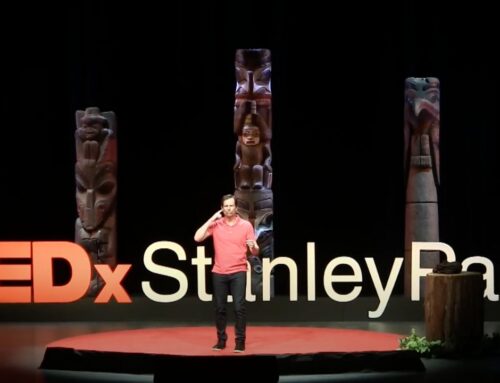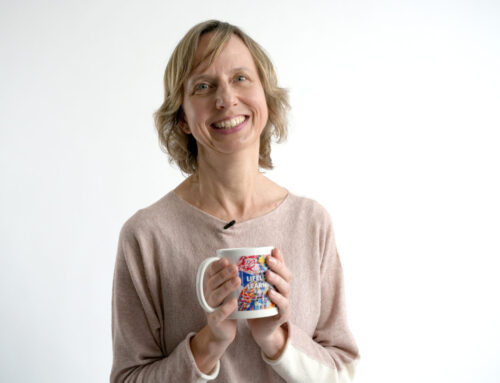SelfDesign Learning Community offers two unique opportunities to our learners and families. The SelfDesign Learning Experience Library caters specifically to our learners’ own personal interests and passions with over 150 learning experiences suited to each unique learner. The SelfDesign Path is a self-paced online course available to parents with children enrolled with SelfDesign. It explores SelfDesign’s philosophy and how it can apply both to family relationships and to the home learning environment, strengthening the parent–child dynamic.
As SelfDesign’s librarian, Marianne Butler curates the thousands of learning resources that make up the Learning Experience Library’s collection. As our Path course facilitator, she communicates with and supports parents taking the course, ensuring they have the materials and information they need to take part in the course’s real-time meetings and asynchronous online discussions.
Both roles provide her with insights into SelfDesign’s unique philosophy and approach to learning – insights deepened further by her experience as the parent of three SelfDesign learners.
In this interview, Marianne talks about her roles at SelfDesign, describes how resources in the SelfDesign Learning Experiences Library are developed, and shares her insights into how the SelfDesign Path course can help parents better understand SelfDesign’s approach and better support their children’s learning.
The interview has been edited for length and clarity.
What do you do at SelfDesign?
I oversee and manage the content of the Learning Experiences Library and the tracking related to the library.
I also am the facilitator for the SelfDesign Path, the online course we offer to SelfDesign parents and educators. I look after the course’s administration and communication. This year, we’re offering real-time meetings for parents and educators in addition to the asynchronous online meetings, so I’m in charge of the communication around that and making sure that everybody has the access and information they need. I facilitate both the real-time meetings and the discussions in the online conference.
And I’m a SelfDesign parent. We have three children who are or have been part of SelfDesign. The oldest graduated from SelfDesign Learning Community last year.
Describe your SelfDesign journey
It all started with our 18-year-old. We decided when she was young – just one year old, so very, very young – that we were going to homeschool her. A friend told me about SelfDesign and suggested I check out Brent Cameron (SelfDesign’s founder) and River Meyer’s book. I read it, and I was like, “This is it! This is what I believe.” We enrolled our daughter when she became old enough for kindergarten, and everything followed from that.
I wanted to support a community that was bringing something into the world that I felt was important, so I sought out contracts with SelfDesign. I worked with SelfDesign Global, our previous program for learners who are not British Columbia residents. I also worked on a pilot program for families transitioning into SelfDesign after recent autism diagnoses.
Then, in about 2015, I started working with the Learning Experiences Library. I was part of the library development team, helping to design learning experiences. Catherine Dinim (now Principal of SelfDesign Learning Community) was leading that project then, and when she moved into a leadership role, I became the library’s manager.
I took on the Path facilitator role a year or so after that.
How has your experience shaped your approach and insights regarding your work today?
I think that all of those experiences, and most particularly my parenting experience, have really helped to inform my understanding of SelfDesign practice. I was really interested in SelfDesign’s philosophy and approach right from the start, and I feel I have a pretty good grounding in it. Not only do I understand it, but I live it – and I work from that space.
Being a SelfDesign parent also gives me the parent-user experience and perspective, which helps me better support families.
How do you select the resources for the library?
The learners determine the topics that the learning experiences in the library cover. We have an email address that learners can email us at, but it’s usually educators who contact me. A learning consultant might email me with, “Hey, I’ve got a learner who’s really into cycling. Do you have anything?”
If we do, I recommend an existing learning experience. If we don’t, I develop something to share directly with that learner and also put it into the library. I take the topic and spend time online researching and looking for good content.
We define “good content” as content that is interesting to learners and is relevant and inspiring. For example, if a learner loves to ride their bike, we would want to collect resources that are, of course, about bicycles and also about things that could be inspiring and interesting that are related to bicycles. We actually have a learning experience about bicycles, and yes, it includes bicycle maintenance and how the gears work, but it also includes a video about how someone altered a bicycle so that, all of a sudden, you can’t ride that bike because the handlebars work in the opposite direction – and how the brain reacts and adjusts to that. There’s another video about a group of friends who travel around the world to ride their BMX bikes in different places.
On top of that, we look for content that’s safe and appropriate for all SelfDesign learners, so we avoid content that has paid advertising. Those ads are determined by the browser history of the computer the learner is using, and depending on who they’re sharing their computer with, that could be pretty scary. Finding good content without ads is challenging, but it’s one of our parameters.
And of course, as a school, SelfDesign doesn’t advertise commercial products or services.
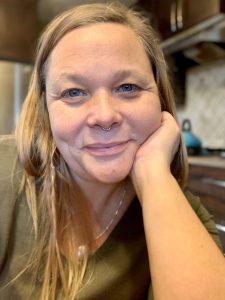
Have learners given you any feedback about the library?
We don’t get much feedback directly from the learners, but a friend once told me how excited her daughter was when she learned I looked after the library. Her daughter reacted like I was some kind of superstar, because she spent so much time in the library. She just couldn’t believe it: “I know that person? Marianne! I can’t believe it’s you!”
How do you feel Path helps SelfDesign families?
One of the bigger pieces of Path has to do with family dynamics and how the way we interact with our kids has a huge impact on how they learn. Path helps you explore your own life situation and how you can make decisions to live this practice of putting the child at the centre of their own learning. It can help families understand, for instance, how and why we do weekly Observings for Learning, and why it isn’t just about sharing a list of “the 10 things my kid did this week.”
It’s real life work, and it can help in other areas of family life, too.
For example, there’s an exercise in Path where participants are asked to quickly draw a picture of what they think their own family dynamic looks like through the eyes of each family member. I did that exercise the year Path came out, and it was life-changing. That one quick exercise helped me to see something in my family that I did not realize was there. It shone a spotlight on a place where I could focus to help make life a little bit more enjoyable for one of our family members.
I’ve been through the course maybe eight or nine times now, and every time I go through it, it’s a new experience because I’m coming from a different place.
Given your experience, what advice would you share with new SelfDesign learners and parents?
Trust the learner. Trust that they know what will enliven their passions. Because when we’re super invested and really interested in what we are doing, that’s when our brains switch on and that’s when new information gets processed and stored.
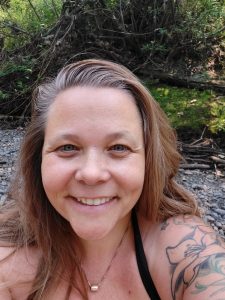
What do you love most about working with SelfDesign?
I love creating relationships, getting to know people and having meaningful conversations, which is definitely happening with Path and especially with the real-time meetings.
In terms of the library, I love helping to stoke the fire of excitement and interest in learners who are delving into their passions. I love that the library is helping me to reach into that passion and maybe find other things to interest learners – to open up new directions for them, to help them dive deeper and to broaden their explorations, too.
What are some of your own interests and passions outside of work?
I love spending time and connecting with my family, spending time with friends and being in community – these are all very important to me.
I enjoy creative ventures like knitting, sewing, and making art. I really love to sing – I really, really love to sing with people, but I’m happy to sing on my own. And I sing all the time.
For more information about Path, please email us at info@selfdesign.org
Learn more about SelfDesign’s philosophy
Learn more about our unique Learning Experiences Library
Learn more about how we work to keep learners and families safe at SelfDesign

